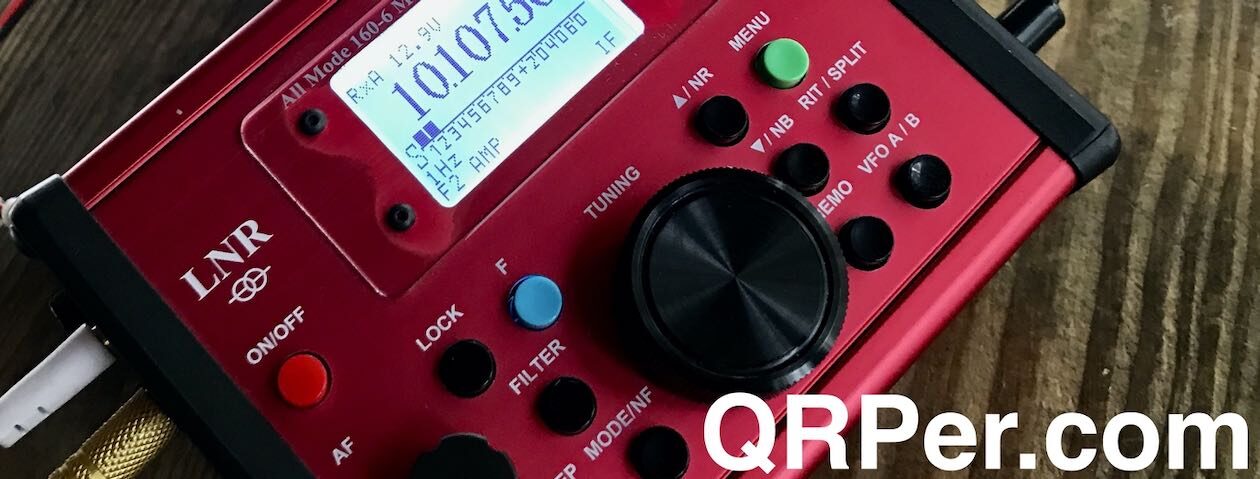 As I mentioned in a previous post, instead of going to Hamvention this year, I went on a POTA expedition with my buddy Eric (WD8RIF) and his son Miles (KD8KNC) in West Virginia.
As I mentioned in a previous post, instead of going to Hamvention this year, I went on a POTA expedition with my buddy Eric (WD8RIF) and his son Miles (KD8KNC) in West Virginia.

In short? It was a brilliant trip!
Amazing WV

West Virginia is such a beautiful state and it’s absolutely chock-full of state and national parks. Eric and I were left scratching our heads as to why there are so few activations in many of West Virginia’s most accessible parks.

In fact, though it’s still relatively early in the season, we found the parks to be rather busy with tourists from across the globe.
We set up camp at Babcock State Park and used it as our home base to activate numerous parks in the area. In the late evenings we activated Babcock from the comfort of our campsite.

I didn’t bring Hazel on this trip, but Eric brought his little dog, Theo– A.K.A “The Great Warg”–who was our little POTA mascot and certainly our ambassador at each site.

Theo attracted a lot of attention from pretty much anyone and everyone. That little guy never meets a stranger.
On a mission
Our goal wasn’t to activate as many parks as possible, rather it was to enjoy camping, sightseeing, and simply hanging out together during our activations.
Wow–what a success!

If you’ve been on the air the past few days, you’ll have noticed that band conditions have been pretty rough and unstable at times.

We had to allocate more time than normal to work our ten contacts needed for a valid park activation.
That was perfectly fine, though, because the scenery at our activation sites was simply spectacular. I just hope the rushing waters didn’t create too much QRN in my videos!

We also learned early on that (since we had no band pass filters in tow) it was best that we work non-harmonically-related bands simultaneously and, of course, separate our stations as far apart as reasonable at each site. When Eric was on 40 or 20 meters, I was on 30 and 17 and vice versa. It worked out pretty well.
Time management…
 Now that I’m back at the QTH, I’ll pull the videos from my camera then process and upload them. I’m currently a good four weeks behind on field reports.
Now that I’m back at the QTH, I’ll pull the videos from my camera then process and upload them. I’m currently a good four weeks behind on field reports.

If you’ve tried to contact me recently, you’ll notice I’m also at least two or more weeks behind on email as well. Unfortunately, there’s simply not enough time in the day and I need to sort out a better way to handle questions from readers and subscribers. I love answering emails and attempt to reply to each and every one, but the amount of time it takes to manage email is actually now taking a significant bite out of my content creation time. Between QRPer.com and the SWLing Post, I receive an average of 25-40 messages per day from readers, many of which are new to the site. Those stack up rapidly when I’m traveling or out and about doing activations.
I receive questions about choosing gear, asking about operating practices, and general advice on a variety of radio topics. They’re all great questions, but I feel like I’m a bit of a bottleneck in terms of delivering answers.
I might build a discussion board or create an email group where people can find community support. I certainly welcome your thoughts and comments on this.
I need to take action soon, because I’ve got a lot of travels planned this summer and will be off-grid for days at a time.
If I’m being perfectly honest, another reason why I didn’t attend Hamvention this year is because I knew it would only add to my work and correspondence load right before nearly two months of planned travels.
Our POTA camping expedition was a more relaxing option than Hamvention for 2022. (You can bet I’ll be at the 2023 Hamvention, though!)
Sharing the journey
 Indeed, this trip reminded me why I do what I do here: I love to share the radio journey.
Indeed, this trip reminded me why I do what I do here: I love to share the radio journey.
On that note, I’ve been absolutely overwhelmed with kind comments from readers and subscribers. It’s humbling and I’m most grateful to each and every one of you. Thank you so much!
 Sharing the radio journey is indeed my main focus here on QRPer.com and on my YouTube channel. Sharing my journey and yours via the many excellent guest posts I’ve received.
Sharing the radio journey is indeed my main focus here on QRPer.com and on my YouTube channel. Sharing my journey and yours via the many excellent guest posts I’ve received.
I’ll sort out a way to manage correspondence in due time and, in the meantime, I appreciate your understanding.
Thanks for reading this post and many thanks to Eric and Miles for an amazing trip exploring the rivers and mountains of West Virginia! I can’t wait to do this again.
Indeed, this trip has me absolutely energized about the activations I’m plotting in Canada this summer. Stay tuned!
































